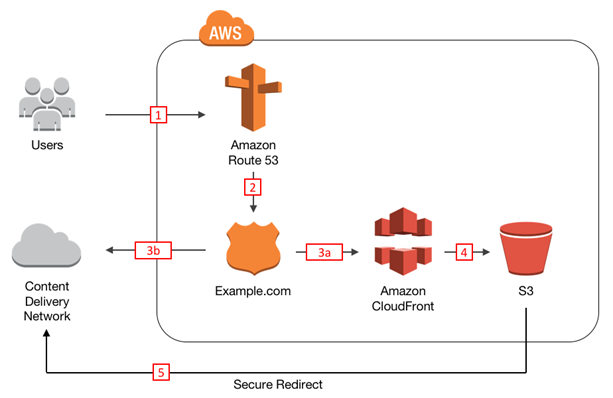AWS Security Blog
Category: Amazon Route 53
How AWS protects customers from DDoS events
At Amazon Web Services (AWS), security is our top priority. Security is deeply embedded into our culture, processes, and systems; it permeates everything we do. What does this mean for you? We believe customers can benefit from learning more about what AWS is doing to prevent and mitigate customer-impacting security events. Since late August 2023, […]
Automatically block suspicious DNS activity with Amazon GuardDuty and Route 53 Resolver DNS Firewall
In this blog post, we’ll show you how to use Amazon Route 53 Resolver DNS Firewall to automatically respond to suspicious DNS queries that are detected by Amazon GuardDuty within your Amazon Web Services (AWS) environment. The Security Pillar of the AWS Well-Architected Framework includes incident response, stating that your organization should implement mechanisms to […]
Protect your remote workforce by using a managed DNS firewall and network firewall
More of our customers are adopting flexible work-from-home and remote work strategies that use virtual desktop solutions, such as Amazon WorkSpaces and Amazon AppStream 2.0, to deliver their user applications. Securing these workloads benefits from a layered approach, and this post focuses on protecting your users at the network level. Customers can now apply these […]
How to configure an LDAPS endpoint for Simple AD
In this blog post, we show you how to configure an LDAPS (LDAP over SSL or TLS) encrypted endpoint for Simple AD so that you can extend Simple AD over untrusted networks. Our solution uses Network Load Balancer (NLB) as SSL/TLS termination. The data is then decrypted and sent to Simple AD. Network Load Balancer […]
Simplify DNS management in a multi-account environment with Route 53 Resolver
April 19, 2023: In the section “Create private hosted zones” we updated step 1 to fix syntax error. September 27, 2021: In the section “Third use case,” we updated step 3 to improve clarity. April 15, 2021: In the section “Third use case,” we updated the diagram and steps for clarity. April 2, 2021: In […]
Enhanced Domain Protections for Amazon CloudFront Requests
Over the coming weeks, we’ll be adding enhanced domain protections to Amazon CloudFront. The short version is this: the new measures are designed to ensure that requests handled by CloudFront are handled on behalf of legitimate domain owners. Using CloudFront to receive traffic for a domain you aren’t authorized to use is already a violation […]
How to Use Bucket Policies and Apply Defense-in-Depth to Help Secure Your Amazon S3 Data
Amazon S3 provides comprehensive security and compliance capabilities that meet even the most stringent regulatory requirements. It gives you flexibility in the way you manage data for cost optimization, access control, and compliance. However, because the service is flexible, a user could accidentally configure buckets in a manner that is not secure. For example, let’s […]
How to Configure an LDAPS Endpoint for Simple AD
September 9, 2020: There’s an updated version of this blog here – https://aws.amazon.com/blogs/security/how-to-configure-ldaps-endpoint-for-simple-ad/. Simple AD, which is powered by Samba 4, supports basic Active Directory (AD) authentication features such as users, groups, and https://aws.amazon.com/blogs/security/how-to-configure-ldaps-endpoint-for-simple-ad/the ability to join domains. Simple AD also includes an integrated Lightweight Directory Access Protocol (LDAP) server. LDAP is a standard application […]
How to Help Protect Dynamic Web Applications Against DDoS Attacks by Using Amazon CloudFront and Amazon Route 53
Using a content delivery network (CDN) such as Amazon CloudFront to cache and serve static text and images or downloadable objects such as media files and documents is a common strategy to improve webpage load times, reduce network bandwidth costs, lessen the load on web servers, and mitigate distributed denial of service (DDoS) attacks. AWS […]
How to Protect Your Web Application Against DDoS Attacks by Using Amazon Route 53 and an External Content Delivery Network
Distributed Denial of Service (DDoS) attacks are attempts by a malicious actor to flood a network, system, or application with more traffic, connections, or requests than it is able to handle. To protect your web application against DDoS attacks, you can use AWS Shield, a DDoS protection service that AWS provides automatically to all AWS […]









